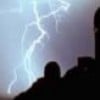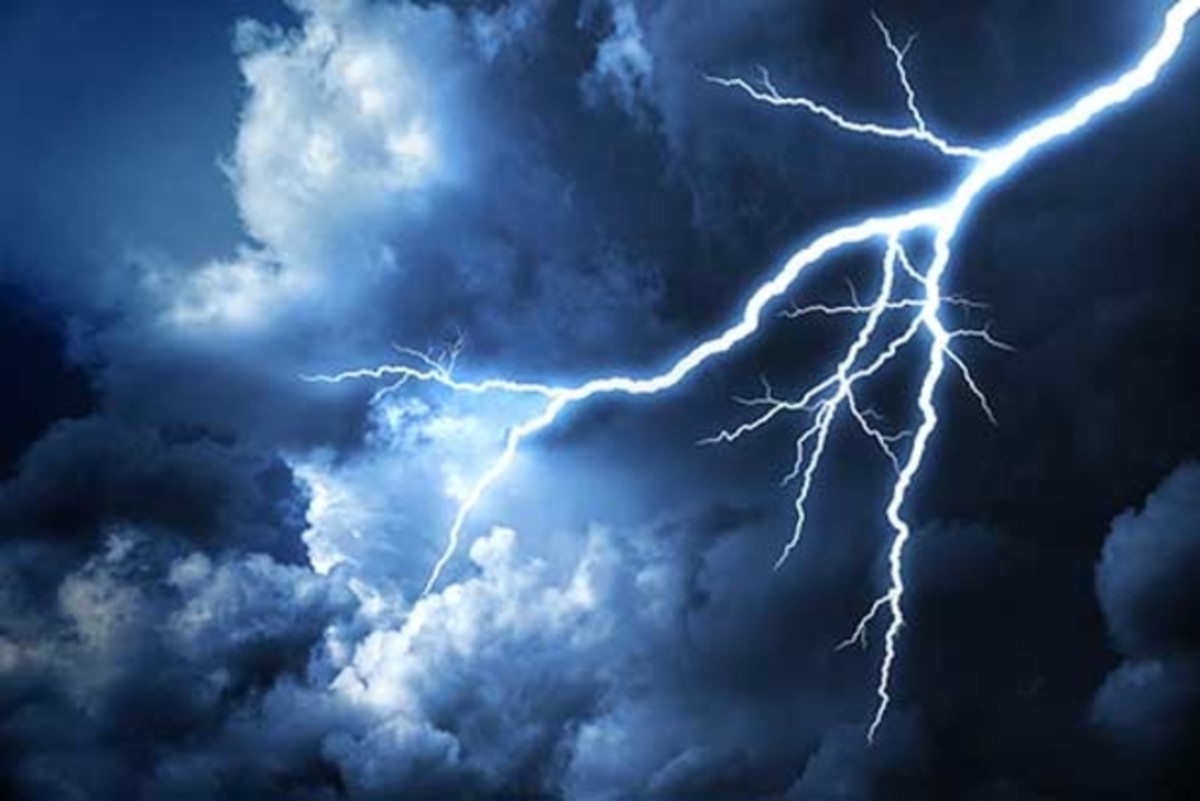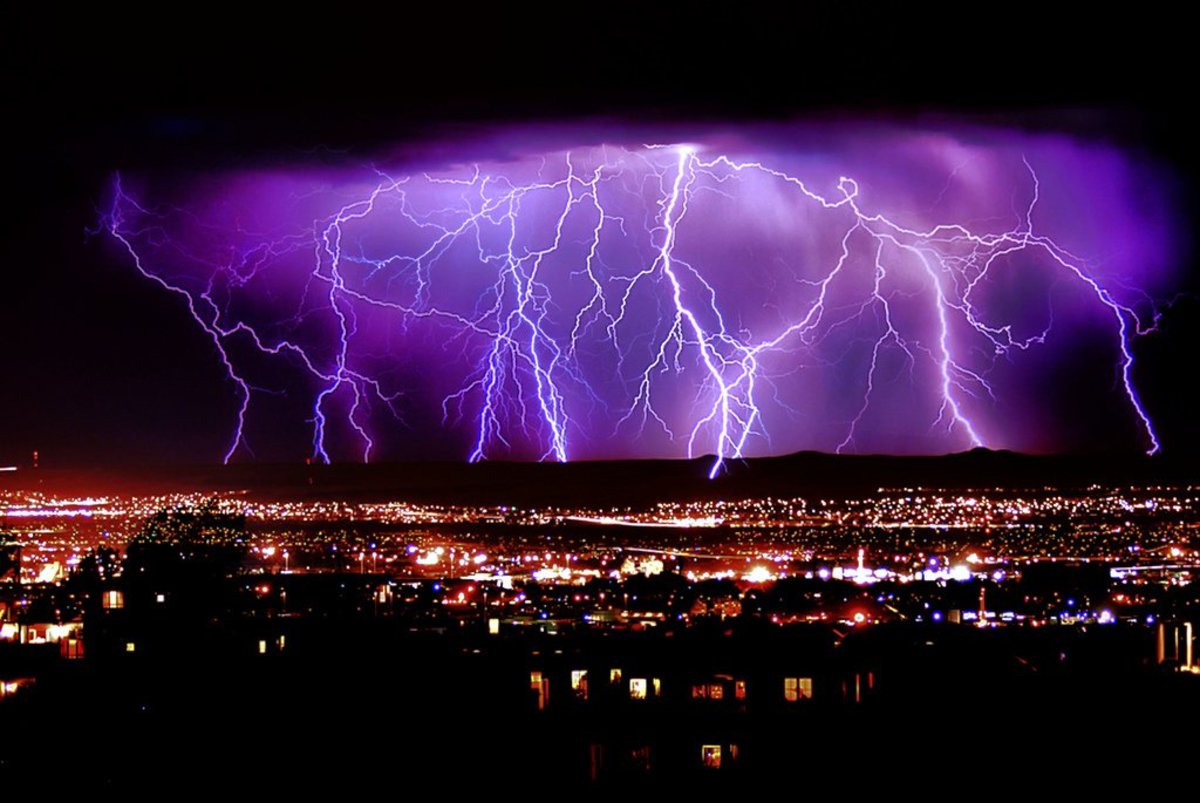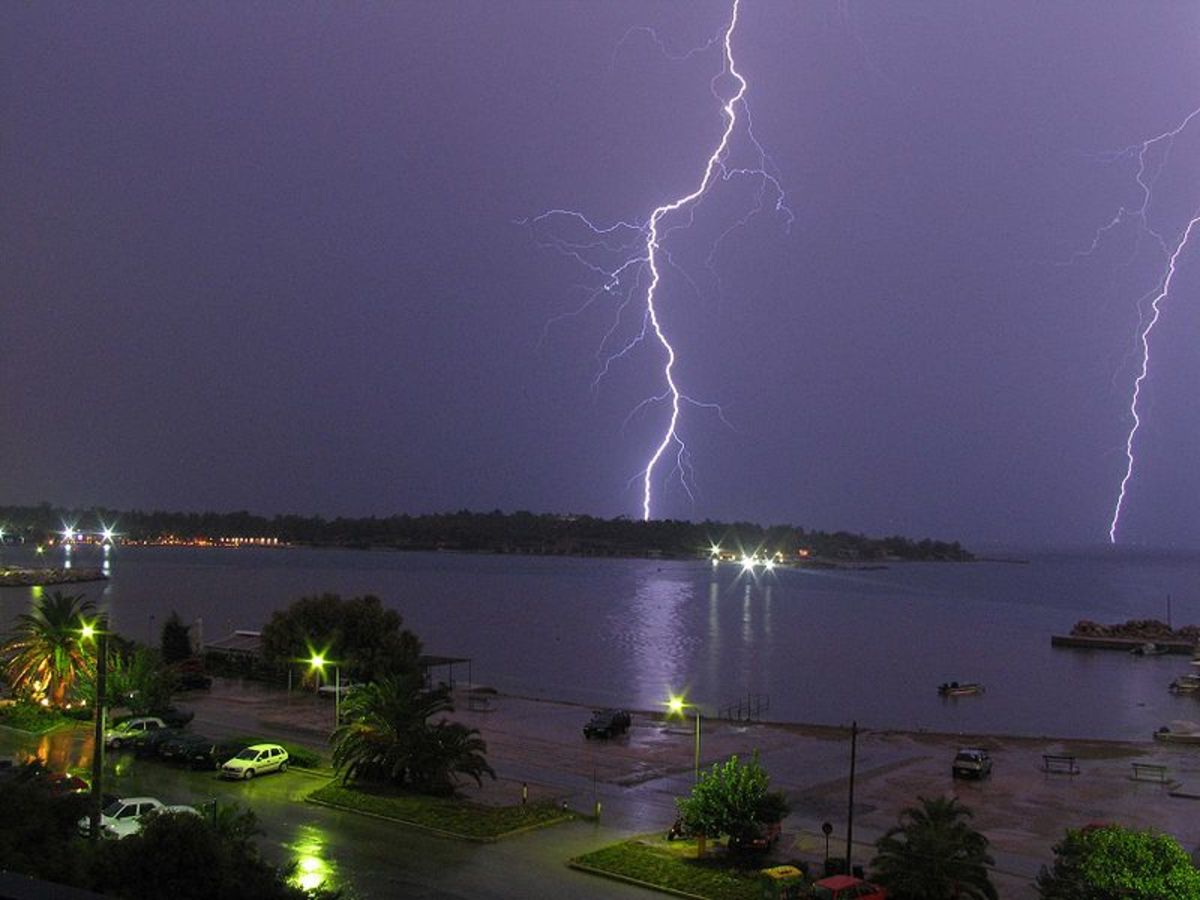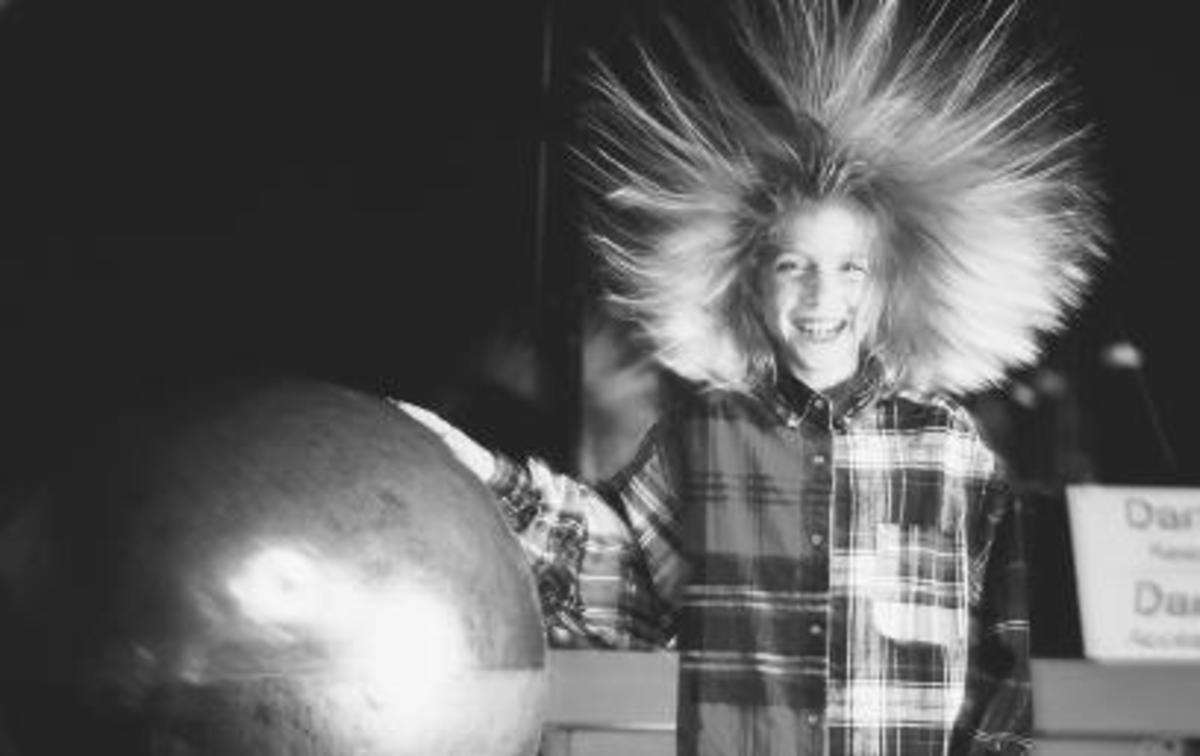Lightning Strikes - Thunder Lightning - and Lightning Static Electricity
Lightning is Static Electricity
Lightning may not look much like static electricity, but actually they are similar. Both are sparks of electricity created through the attraction of unlike charges. The only difference is that static electricity creates a small spark, while lightning is a huge spark of electricity on a large scale.
A Spark or Lightning
For a spark to occur, it will need both a non-conductor and a conductor or two conductors with great differential resistance. These conditions include the rapid movement of tiny water particles in a storm. Certain conditions will cause enough static electricity buildup to cause a spark or lightning. Lightning is an extreme example of a spark. A spark is a stream of electrons jumping across an air gap, heating the air until it glows and expands.

Striking it Lucky
No one quite understands the term "striking it lucky" better than 16-year-old BreAnna Helsel. The Michigan teen survived being struck by lightning and went on to win $20 in the lottery the next day.
Helsel was at her home in Blanchard, about 50 miles northeast of Grand Rapids, watching thunderstorms roll by on June 6 when she noticed rain entering an open kitchen window. "She went to close the window and the lightning came through and hit her. Helsel struggled to describe the sensation she felt as the electricity passed through her body. Helsel said it felt like when your foot falls asleep.
Helsel saw the electricity shoot out of her fingers and into the overhead lights, immediately knocking out the house's power. At first, the teenager didn't want to be checked out at a hospital, but when she started complaining about a tingling sensation in her arm, she and her mother drove through the rain to get to Spectrum Health Kelsey Hospital in Lakeview.
At the Hospital, Helsel was checked out and the only signs of the lightning strike were some darkened fingertips on her right hand and a shaking arm from damaged muscles that will require some therapy. She will recover fully.
Helsel is a very lucky girl. Hospital employees agreed that Helsel was on such a lucky streak, she should immediately play the lottery. She's too young, so her mother went out the next day and bought a Michigan lottery ticket for her. And she won $20
Storm
In storm clouds, normally the cumulonimbus clouds, tiny particles in the cloud move around picking up positive or negative energy charges. Either smoke, dust or ice particles will determine the polarity. The positive charged particles will tend to be lighter and rise to the top of the cloud. The negative charged particles will tend to be heavier and will collect at the bottom of the cloud.
Lightning May Not Look Much like Static Electricity
Lightning may not look much like static electricity, but actually they are similar. Both are sparks of electricity created through the attraction of unlike charges. The only difference is that static electricity creates a small spark, while lightning is a huge spark of electricity on a large scale.
Rapid Movement of Tiny Water Particles in a Storm
For a spark to occur, it will need both a non-conductor and a conductor or two conductors with great differential resistance. These conditions include the rapid movement of tiny water particles in a storm. Certain conditions will cause enough static electricity buildup to cause a spark or lightning. Lightning is an extreme example of a spark. A spark is a stream of electrons jumping across an air gap, heating the air until it glows and expands.
Cumulonimbus Clouds
In storm clouds, normally the cumulonimbus clouds, tiny particles in the cloud move around picking up positive or negative energy charges. Either smoke, dust or ice particles will determine the polarity. The positive charged particles will tend to be lighter and rise to the top of the cloud. The negative charged particles will tend to be heavier and will collect at the bottom of the cloud.
Lightning
Power of Attraction
This buildup of charges will continue and charges will divide into opposing groups in the cloud. When the power of attraction between them gets too great, the particles discharge their energy at each other, completing a path for electricity to travel through the air. This flow of electricity is lightning.
Glow of Lightning
Why there is the glow of lightning is because the air in between has resistance which heats up the air white-hot. Since air is a non-conductor of electricity, it does not readily let electrons pass through it. But when the attraction is great enough, some electrons will leave their cloud and fly to the other cloud. While they move through the air, they smash into and bounce off molecules or atoms that are in their way. This heat up the air white-hot and this is lightening. The thing is this: introduce high voltage into higher resistance, the voltage will reduce and the current will increase. High current is heat which can go up to 30,000 degree Celsius.
Tremendous Heat Energy with Bright Light and Thunder
Back to the grouping of positive and negative charges in the clouds. At the bottom of the cloud are the negative charges. When the negatively charged particles have built up and lower enough to the ground, they begin to seek out positive charges from the ground below. The excess electrons create a channel of charged air called a leader that reaches down to the ground below. The leaders attract other charged ground-based channels called streamers, and this can pass through plants, buildings and yourself. When the stepped leader from the cloud meets a returning streamer from the ground, the path is ready. An electrical current called the return stroke, travels back up the path. This return stroke releases tremendous heat energy with bright light and thunder. There are several strokes in a single second. When enough electrons have made the jump to create equilibrium, the attraction is reduced and the flow stops. The spark quickly cools down and the air stops glowing. It is all over within a fraction of a second. A bolt of lightening travels at a speed of 160,000 km/h. In the case of static electricity it is a small spark and you may only feel a slight discomfort from the heat of the spark. But in the bolt of lightning, it can cause an enormous amount of damage to humans, animals, plants and buildings.
Install lightning rods
When air is heated it expands and contract when it cools. And because the spark happens so fast, the air expands and contracts very rapidly. When it contracts, the air slaps together. The noise you hear from a spark is just a snap, because it is on a small scale, whilst on the other hand, the sound of lightening is tremendous crash. This crash is called the thunder and because light travels faster than sound, thunder may seem to lag a moment from lightening. The way to protect yourself when there is lightening is to avoid holding metallic things because charges will always look for the shortest and easiest route to the ground. Check on your footwear and clothing - if the wear will give you excess of positive charges and the cloud right above is negatively charged, then you automatically become the ideal candidate to be struck. Recall the Central Africa case where eleven players of soccer in a football pitch all perished leaving intact the eleven players of the opposing team. Lighting can strike you out in the rain and you should not stand under a tree during a thunderstorm, in case the tree gets struck with lightning. And it is not a good idea to walk out in an open area with an umbrella, because if you are the highest object in the field, you may be a target for the lightning strike. Ensure that you install lightning rods in all your buildings and these rods should therefore be the highest parts of the structures. In case of very tall and wide buildings, the rods should not only be the tallest points but also should be installed by the sides. Studies show that larger, rounded rods are more effective than sharp pointed rods contrary to the believe people have that static electricity is attracted more to a pointed end of the rod.
Mission Abandoned Until the Thunder Clears
Air transport is today the safest means of transport. One of the greatest obstacles that will put the guys that operate aircraft off is static electricity. A single report of thunder and the mission is abandoned until the thunder clears. When the aircraft is airborne, it collects charges from the surrounding air and clouds. To prevent excessive buildup of charges that would not only result in radio navigation difficulties but also can produce huge sparks that would instantaneously destroy the aircraft completely, an aircraft is installed with static wicks on the ailerons and tail feathers to return charged electrons so collected back to the surrounding air. Fueling an aircraft poses another risk due to static sparks. Fueling is in thousands of litres and is done at a very high rate and fumes do develop. To prevent static sparks, a formula based on pump rate, humidity and temperature is used to determine the amount of charges in the fuel. If the charge is high, the fuel is discharged. Whenever the aircraft land, the first thing you do before anything else is to discharge the plane body by using static discharge reels.
Where there is Thunder there are Strong Convective Cumulonimbus Clouds
Where there is thunder there are strong convective cumulonimbus clouds. And talking about these rains bearing cumulonimbus clouds, whenever they come too low to the ground, they curl like mushroom with destructive freak winds of over 200 Km/h that will destroy trees, buildings, electric cables and ads boards. These really are thunderstorm downbursts and will usually last only for one or two minutes and it is all over leaving behind a trail of destruction and widespread power blackouts. These clouds have turbulences with strong updraft and downdraft forces. Aim your plane at those convective clouds and the updraft and downdraft forces will take control of your plane and all the souls in your plane will most likely have a sad ending.
The hubber's website is designed to help beginners and average readers make money online to supplement the few dollars they may be earning from their Google Adsense - details of which you can find in my profile here, if you will.
